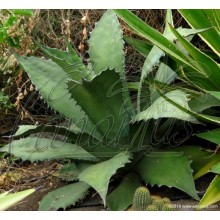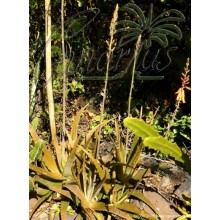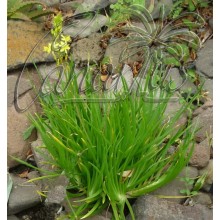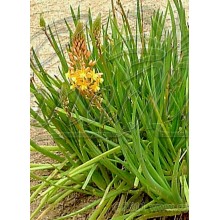Tillandsia purpurea
This species creeps on sand fields in the harshest desert conditions, where no other plants are seen in miles. Tillandsia purpurea is found by the border between Chile and Peru. Its purple-purpureous inflorescences are a show. This xeric bromeliad is also sought after by collectors of succulent plants.
New
This species creeps on sand fields in the harshest desert conditions, where no other plants are seen in miles. Tillandsia purpurea is found by the border between Chile and Peru. Its purple "purpureous" inflorescences are a show. This xeric bromeliad is also sought after by collectors of succulent plants.
Our Tillandsias - What do we ship?
We grow our grey-leaved tillandsias outdoors, here in Tenerife. We start them by dividing large adults, so they are all "XXL" in size. They grow exposed to full sun, rain and wind during the winter months and we shift them to morning-to-midday sun during the hot months. By doing so they become very robust.
Tillandsias are extreme epiphytes that typically do not like to be planted in pots. Most of them prefer to be hung on branches or wires. We do not provide any support with the plant that we ship so be prepared to fix your airplant. We recommend to tie them with nylon fishing line, or metal wire as a second option. We never use glue, since it can cause problems.
If you want to learn more about what we ship, including some bromeliads, click our our information menu, then read "What we exactly ship" and see pictures of our plants on the packing desk.
Our Tillandsias - What do we ship?
We grow our grey-leaved tillandsias outdoors, here in Tenerife. We start them by dividing large adults, so they are all "XXL" in size. They grow exposed to full sun, rain and wind during the winter months and we shift them to morning-to-midday sun during the hot months. By doing so they become very robust.
Tillandsias are extreme epiphytes that typically do not like to be planted in pots. Most of them prefer to be hung on branches or wires. We do not provide any support with the plant that we ship so be prepared to fix your airplant. We recommend to tie them with nylon fishing line, or metal wire as a second option. We never use glue, since it can cause problems.
If you want to learn more about what we ship, including some bromeliads, click our our information menu, then read "What we exactly ship" and see pictures of our plants on the packing desk.
The picture of the wild plant in bloom is from Wikimedia commons , by: Timm Stolten - Image taken by Mrs. Edwina Pfendbach., CC BY-SA 3.0, https://commons.wikimedia.org/w/index.php?curid=27902523
| Cultivation | Protected |
| Plant origin | America |
| Presentation | Bare root |
| Botanical family | Bromeliaceae |
| Light | Sun |
| Minimum winter temperature | -5 ºC to 5 ºC |
| Plant type | Herbaceous |
| Care | Pot |
| Shape | Perennials |
























